Fragrant violet: description and cultivation from seeds
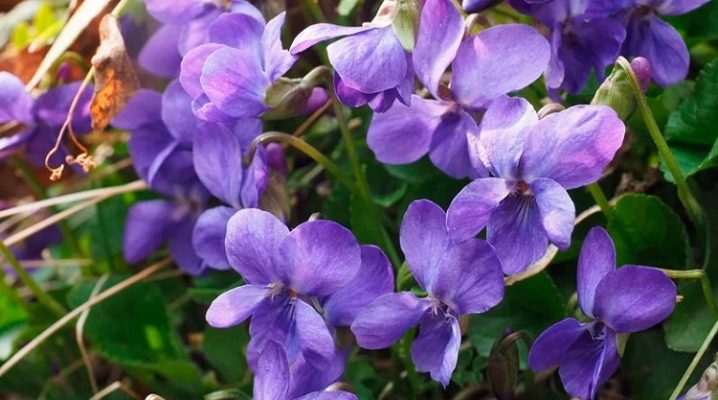
A large number of different types of violets combine a delicate and at the same time expressive scent. Each species has its own - the inflorescences of night and day beauties smell differently, but any aroma is delicious. It attracts people and insects; many violets are honey plants.
Fragrant violet is the most famous plant of the Violaceae family. Mention of it can be found in ancient myths, chronicles, historical treatises and works of botanists. The Scots were the first to cultivate this plant in the 16th century.
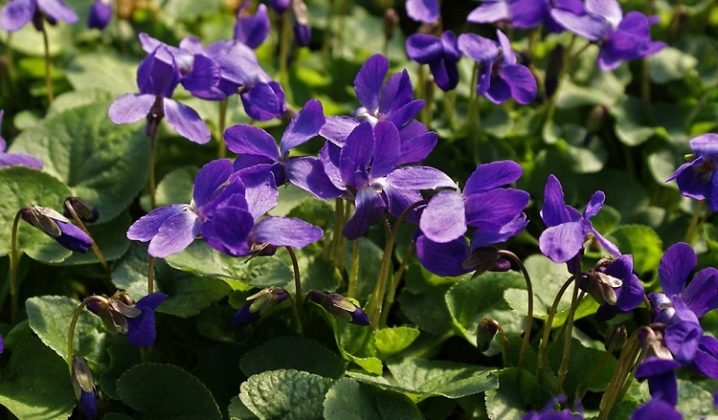
General information
Fragrant violet is a perennial herb that grows up to 15 centimeters high and has blue-violet inflorescences. The strong creeping rhizome produces many rosettes that take root and give life to new plants. In this way, the violet covers the ground with a beautiful green carpet strewn with small fragrant flowers. The plant lives in the Northern Hemisphere, in latitudes with a temperate climate.
Violet prefers forest edges and clearings, as well as mountain slopes overgrown with forest. It is easily cultivated in gardens and parks, but if you stop caring for it, it also easily runs wild. The plant loves sunny areas or light shade, fertile and loose soils. Poor drought tolerance. It blooms actively from April to early May, blooms again at the end of summer. The fruit is a capsule with a parietal arrangement of seeds, ripens in June.
Phenologists note the violet's ability to predict rain; it reacts sensitively to moisture, which can damage delicate pistils and stamens. Hiding them, the plant folds the petals of the inflorescences and droops during precipitation, then recovers rather quickly.
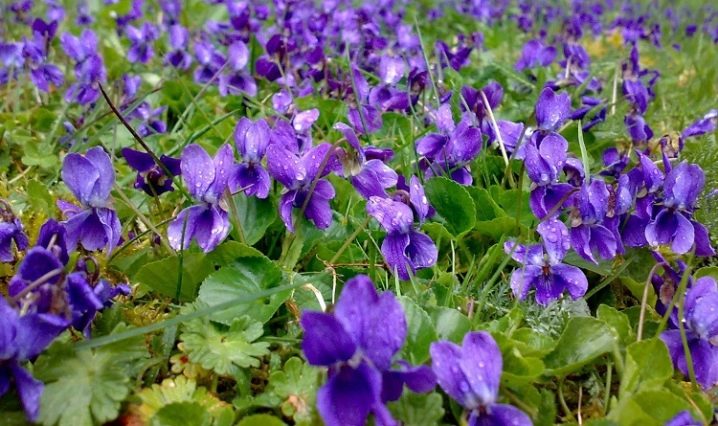
Views
Violets (Viola) are a numerous genus of the Violet family (Violaceae). Today, gardeners cannot say how many species there are in the world. According to various sources, from 500 to 700. On the basis of wild plants, a large number of decorative varieties were bred.
Fragrant violet (Viola Odorata) is one of the oldest wild-growing species that has become the base for many domestic beauties. Here are descriptions of some of the popular plants:
- Fragrant violet "Royal"... A beautiful garden plant with the most delicate aroma, intended for flower beds, borders, the formation of bouquets. Unpretentious in care, firmly tolerates thick shade and high humidity, but prefers semi-shaded flower beds with fertile moist soils. The plant reaches a height of 25 centimeters, has flowers 5 centimeters in diameter.
Violet "Tsarskaya", in addition to decorative purposes, is suitable for industrial cultivation.
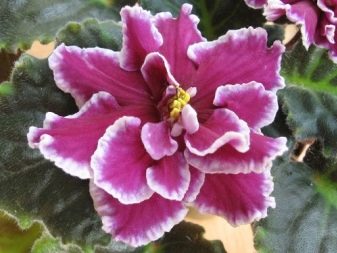
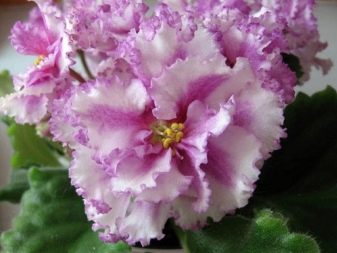
- Konigin Charlotte... A small compact bush up to 15 centimeters high with lush green heart-shaped leaves. Blooms with large bright purple flowers, decorating flower beds from the end of April. The sweet aroma of Konigin Charlotte attracts insects and is an excellent honey plant. The violet of this variety needs fertile loose soil and good lighting.
It is planted in rockeries, rock gardens and flower beds.
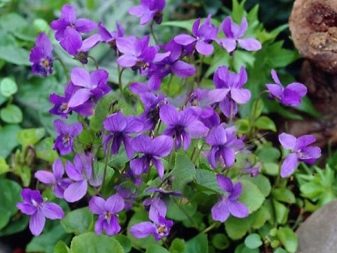
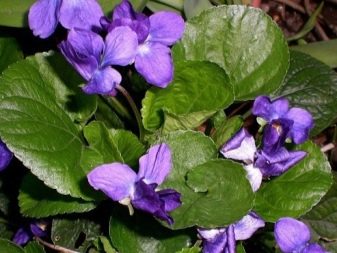
- Alba. The plant has a small shrub up to 15 centimeters in height, which contains double or simple flowers of bright white color with a strong impressive aroma. The variety pleases with its flowering from May to June, forming a juicy white-green carpet. Prefers to grow in partial shade on loose soils with moderate moisture.Violets are planted in flower beds, in containers, mixborders and curbs are made from it.
Alba is combined with almost all spring flowers: iris, veronica, anemone, gravilat, primrose, daffodils.
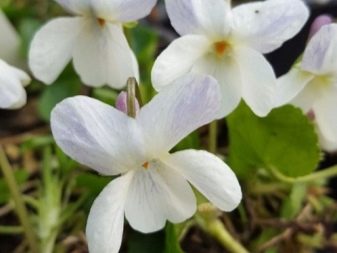
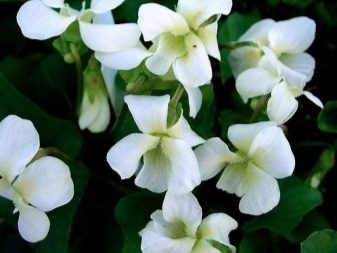
- "Little Fairy". A shrub biennial plant up to fifteen centimeters in height, has lilac simple or double flowers and a creeping stem with which it takes root. The fragrant violet "Little Fairy" is intended for outdoor cultivation, it is used to create flower beds and borders. Blooms in May for three to four weeks, exuding a strong aroma.
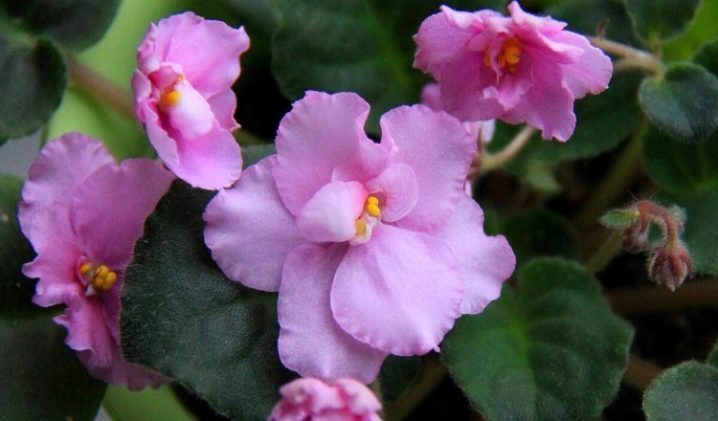
- "Tsar". Perennial bush up to 15 centimeters high with creeping rooting stems. They have lilac simple or double flowers up to 3 centimeters in diameter. Possesses an active aroma. The plant is used to decorate balconies, rocky hills, flower beds and borders. Prefers well-drained, nutritious, moist soils in sunny or semi-shaded flower beds. Blooms in May for 25 days.
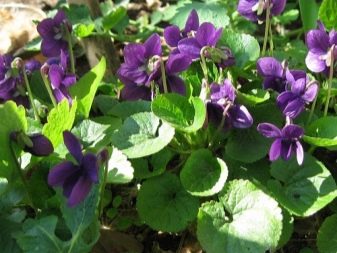
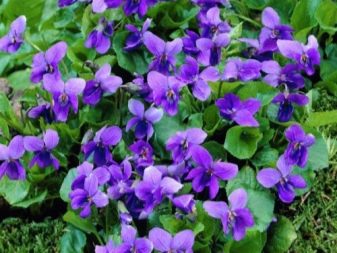
Growing
You can grow a decorative garden violet, but if you bring it from the forest and plant it in the garden, it will immediately begin to develop new territories.

Preparing for landing
Prepare the soil for planting violets in the fall. An illuminated place is chosen, it is possible with a weak shadow. The plant loves the morning sun, and does not tolerate scorching heat and drought. Soils with neutral acidity are prepared for planting. The site should be dug up in winter, at the same time introducing humus and superphosphates into it.
Before planting in the spring, the site must be loosened to enrich it with oxygen. The violet is placed in a sunny place with an unobtrusive shade, the sun provides it with abundant flowering. Seedlings or seeds are planted in the prepared soil. The soil should be of medium humidity. In the forest, this plant chooses lowlands and has a sufficient amount of moisture.
Violet is used not only for flower beds - it is also beautiful as a border plant. And also it can be placed in containers.

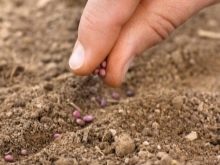

Reproduction
Violet propagates by seeds and vegetatively. Plants grow from seeds that are more resilient and resistant to pests. They are planted immediately after collection, and if this is not done, they will lose the ability to germinate and stratification will be required. In April, seedlings begin to germinate; in May, they should be transplanted to their permanent habitat. Young plants bloom from the second year of life.
The violet sows itself well, seedlings appear at a certain distance from the mother plant - it is 2-4 meters.
Violet propagates vegetatively by side rosettes, you can dig up and plant daughter specimens at a distance of 15 centimeters from each other. It is even easier to breed the plant by dividing the bushes.
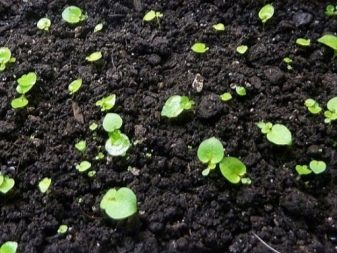

If a border is planted with a violet, it should be periodically dug in and trimmed, otherwise it will displace the rest of the inhabitants of the flower bed. Every 3 years, the border must be renewed, otherwise it will be with bald patches, and the violets will become sick and weak. To do this, remove old plants and plant young ones.
Landing
Seeds are planted in open ground on well-prepared, loosened soil. Pre-moisten it slightly. "Cut" grooves every 20-30 cm, sow seeds and sprinkle with a thin layer of earth.
In more severe climatic conditions, seeds can be pre-germinated in glasses or containers in greenhouses or on a veranda. The disembarkation takes place in early March. This is done in the following way.
- Drainage in the form of pebbles or pebbles is laid out at the bottom of the container, fertilized soil is placed on top. The soil can be watered with potassium permanganate for the purpose of preventive measures against diseases and pests. The seeds are shallowly immersed in the ground, moistened with warm water, covered with glass or foil and placed in a dark, warm place for germination.
- To prevent the planting material from rotting, condensate is periodically removed from the film.
- When shoots appear - and this happens in April - the seedlings are transferred to a bright and cooler place. If left in the same conditions, the seedlings will stretch and be thin.
- During the germination period, watering should be moderate, without excessive zeal.
- After a while, the plants dive to activate growth.
- To strengthen the root system, seedlings are fed with mineral fertilizers.
- In May, the seedlings are transplanted into open ground.


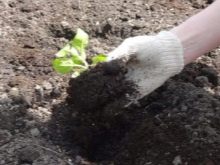
Care
The plant reacts poorly to heat and drought. During the period of strong drying out of the soil, the violet should be moistened. Watering is done early in the morning or late in the evening so that the sun does not dry out and clog the soil.
For good flowering, the plant should be periodically fed. But it must be remembered that all types of violets do not tolerate fresh organic matter. As a top dressing, peat is mixed with manure and superphosphates are added.
The soil should be loosened periodically so that the plant can breathe, while weeds are removed.
If you remove the dry parts of the violet, it will bloom longer and more actively.


Diseases and pests
If you do not water the fragrant violet during the hot dry season, it can be struck by spider mites. The plant will begin to dry, brighten and fall off the leaves. The spider mite is afraid of moisture, so to get rid of it, you will have to spray the lower parts of the leaves every day, where the parasite likes to settle.
When deciding to plant a fragrant violet, you need to understand that it will be extremely difficult to remove it later. A powerful root system is difficult to pull out even from wet soil, since only germinated rosettes break off. All this is compensated by a beautiful fresh carpet of flowers in the garden, which has an incredibly pleasant smell.

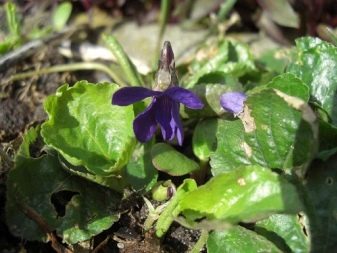
You can find out how to grow fragrant violet seedlings by watching the video below.







































































































The comment was sent successfully.